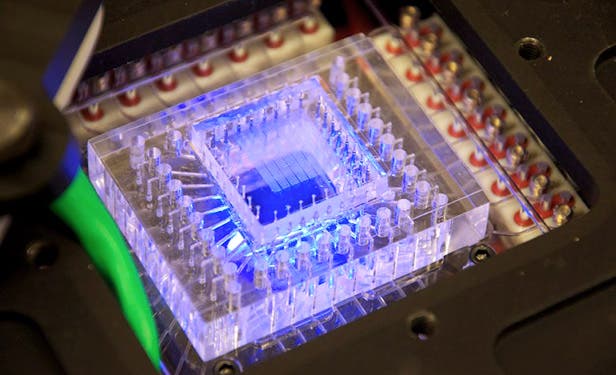The search for extraterrestrial life has always been a fascinating thought, one that has entertained the human mind for generations, sparked by the life-long question “are we alone in the Universe?” Existentialism aside, in the past decades intense efforts have been made in order to find life beyond our blue marble, the most recent of which is the now renowned Mars Curiosity rover mission, whose main objective is that of finding evidence of live on the red planet. Some people, however, who possess the necessary resources and gut, one that bounders the fine line between brilliant vision and madness, have an agenda of their own as far as extraterrestrial life is concerned.
Two high-profile entrepreneurs, Jonathan Rothberg, founder of Ion Torrent, a DNA sequencing company, and J. Craig Venter, founder of Sythentic Genomics, are each separately currently developing solutions for sequencing alien DNA directly on the Martian surface itself. Audacious claims, for sure, since neither company has any deal in place that could see their devices piggybacked on a rocket headed for Mars in the first place. The two are still keen on their ideas and have no intentions in becoming derailed.
Venter claims that his team of researchers is already conducting tests in the Mojave Desert to demonstrate that their machine is capable of autonomously isolating microbes from soil, sequencing their DNA, and then transmitting the information to a remote computer, as would be required on an unmanned Mars mission. On the other side, Rothberg’s Personal Genome Machine is being adapted for Martian conditions, part of project funded by Harvard and MIT called SET-G – “the search for extra-terrestrial genomes.”
Either of the projects, or both, could wind up as being part of the next Mars missions. Scientists have long supported the idea of sending a probe on a return trip to Mars, so that it may retrieve a sample for study. With a DNA sequencer in place already on a Mars rover, the logistic hurdles of sending material back to Earth could be averted.

As one might expect, there are incredibly numerous and difficult challenges. NASA doesn’t have any plans of sending another rover to Mars at least before 2018, and besides this their specifications for adding any new instruments are extremely strict. Christopher Carr, an MIT research scientist involved in the effort, says his lab is working to shrink Ion Torrent’s machine from 30 kilograms down to just 3 kilograms so that it can fit on a NASA rover. It’s not only about weight though; the Martian surface is plagued by radiation which often interferes with studies. Also, sequencing machines are extremely sensitive devices; one single germ from Earth is enough to ruin a multi-billion dollar mission.
A race that might only have losers
Studies have shown that DNA can not be preserved for longer than 1 million years, both space agencies like NASA and private ventures have to embark with the idea that life is already presented on Mars. The planet’s surface is a barren wasteland at its surface, no doubt about it, but a few meters below its surface microbial life might be present, relatively sheltered from the harsh conditions. On Earth, bacteria has been found kilometers below the crust, so the hypothesis isn’t entirely far fetched.
“The current NASA approach is to look for past life. Many people are reticent to talk about extant life,” says Carr. “We are sticking out necks out a little bit, but we want to take that leap.”
The biggest hurdle yet is of a biological nature, though. If life truly exists on Mars, what’s to say that it resembles that on Earth? It’s quite possible that alien life DNA is comprised of different building blocks than that of Earth; it might not even have a double helix. In this case, these genome sequencers would become utterly useless. And if indeed life would be detected and read, than an intense debate would ensue over the eventual discovery’s validity. Scientists would stress contamination, others would be quick to give truth to theories that hold Earth and Mars have exchanged life. Numerous meteorites of Martian origin have been found on Earth. I know I’m pocking a lot of holes in these projects, but frankly there are a myriad of obstacles in place.
Venter also said it might be feasible in the future to reconstruct Martian organisms in a super-secure laboratory on Earth, using just their DNA sequence – he calls this idea “biological teleportation”.
“People are worried about the Andromeda strain,” says Venter. “We can rebuild the Martians in a P-4 spacesuit lab, instead of having them land in the ocean.”
My instinct tells me these ventures are more of a hunt for glory and satisfying the ego than sincere scientific progress. Either way, I personally wish both of them the best of luck.


